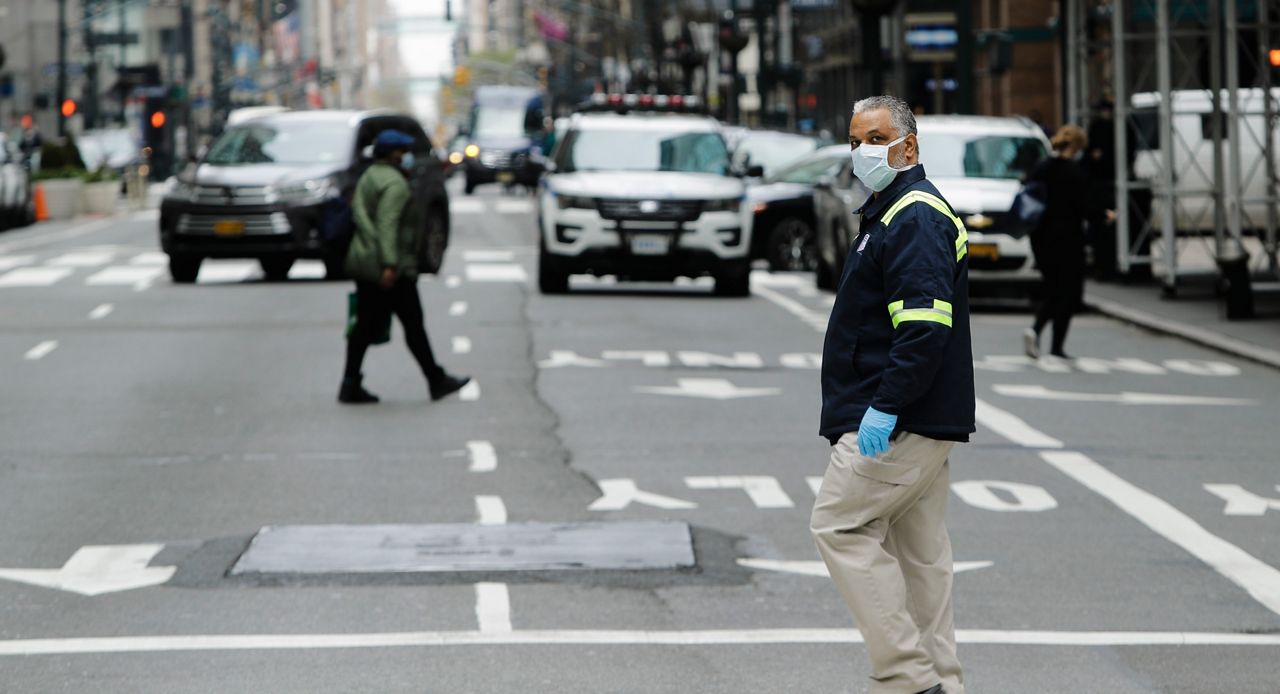Two months after the first case of COVID-19 was confirmed in New York, the state at times appears almost unrecognizable.
More than a quarter of a million citizens have been infected with the novel coronavirus since March 1. More than 18,000 people have died. A recession worse than the one in 2008 is expected by the state's own forecast. Streets usually packed with people and cars are still empty. And someone wearing a mask in a store would usually be something one would find suspicious. Now it’s required.
- LIVE UPDATES: Coronavirus Impact Across CNY
- LIVE UPDATES: Coronavirus Impact Across Capital Region, Hudson Valley
- LIVE UPDATES: Coronavirus Impact Across Rochester
- LIVE UPDATES: Coronavirus Impact Across Buffalo
- INTERACTIVE: Where Are the Coronavirus Cases, Deaths In Upstate New York?
While New York City and the downstate area have been the most impacted, upstate has not been spared. The counties home to upstate’s large cities — Buffalo, Rochester and Albany — have each recorded more than 1,000 COVID-19 cases since the outbreak began, with Syracuse’s Onondaga County not far behind. A month ago, there were only a handful of counties that hadn’t reported a single case. Now there are only a handful that haven’t reported a single death. Nursing homes designed to care for the elderly and the vulnerable have become hotspots everywhere, facing new scrutiny from all levels of government.
- New York Will Investigate Nursing Home Practices During COVID-19 Outbreak
- Ex-Hornell Gardens Employees: PPE Limited, Staff With COVID-19 Continue to Work
- State Ends Policy Allowing COVID-Positive Nursing Home Staffers to Work
And though New York remains the epicenter of the country’s largest public health crisis in a century, it appears the worst has passed. Governor Andrew Cuomo said on April 11 that it looked like the state had reached the apex.
For nearly a week before that, New York was reporting between 700 and 800 new deaths every single day. Deaths, hospitalizations and ICU admissions have plateaued and then decreased since then.
.png)
And while the state’s battle against COVID-19 is far from over and remains the primary objective, New York has now slowly begun turning toward the multiple battles that lie ahead on the other side of the apex.
Whereas public health has been foremost on the mind, the health of the economy is also in question. More than 1.6 million jobless claims in New York have been filed since the outbreak began, which overwhelmed the Labor Department’s staffing resources and forced them to streamline the process. More than $3 billion in unemployment benefits have already been distributed.
The state has spent more than $1 billion on efforts to curb COVID-19, and even with federal assistance that has already been made available, New York could be facing a $15 billion revenue shortfall when all is said and done.
- State Budget Forecast Is Bleak for Years to Come
- The State is Broke And Upstate Counties Are Worried
- DiNapoli: Pandemic Will Create Long-Term Financial Problems For New York
Governor Cuomo has made clear that without more aid from Congress, severe cuts would have to be made to the state budget, which could include up to 20 percent reductions in education and hospitals.
- NYSSBA: School Funding Cuts Could Mean Layoffs
- Superintendents: It's Best To Cut Sooner Rather Than Later
“There’s really no way to absorb that kind of a cut without massive layoffs and cuts to educational programs,” said David Albert of the New York State School Boards Association.
The shortfall in the state budget would also filter down to local governments, which have been devastated by drops in sales tax revenue. County governments on Thursday predicted their losses up to $3.5 billion, with $2 billion for those outside New York City.
“In the absence of this vital revenue stream, and with potential cuts in state aid, local governments simply do not have the tools or resources to sustain operations without direct aid from the federal government,” said Stephen Acquario, executive director of the New York State Association of Counties.
SEE ALSO | Small Cities Could See Revenue Shortfall
The situation only looks more grim with summer fast approaching. Where St. Patrick’s Day parades were canceled days before they took place due to the virus, there is already strong doubt about large events scheduled months from now actually taking place, from the track meet in Saratoga Springs to the New York State Fair. The Allentown Arts Festival in Buffalo and Baseball Hall of Fame in Cooperstown already canceled their June and August events, all of which are big economic opportunities for the area.
This predicament has prompted Governor Cuomo’s daily pleas for more federal aid during his press briefings, which have garnered national attention during the pandemic. Cuomo has numerous times criticized Congress, President Donald Trump and Senate Majority Leader Mitch McConnell on funding for state and local governments, the latter of whom suggested states like New York should file for bankruptcy instead.
As with the shutdown, New York has been collaborating with New Jersey and Connecticut on the details and timeline for reopening their economies. The impatience of some of those in the public have resulted in some "Open Up" rallies like the ones seen in other states.
Right now, it looks like some regions of the state will be able to reopen before New York City, though any reopening will come in phases and with careful monitoring to see if the virus respikes.
On May 15, some areas of upstate are slated to reopen construction and manufacturing companies.



